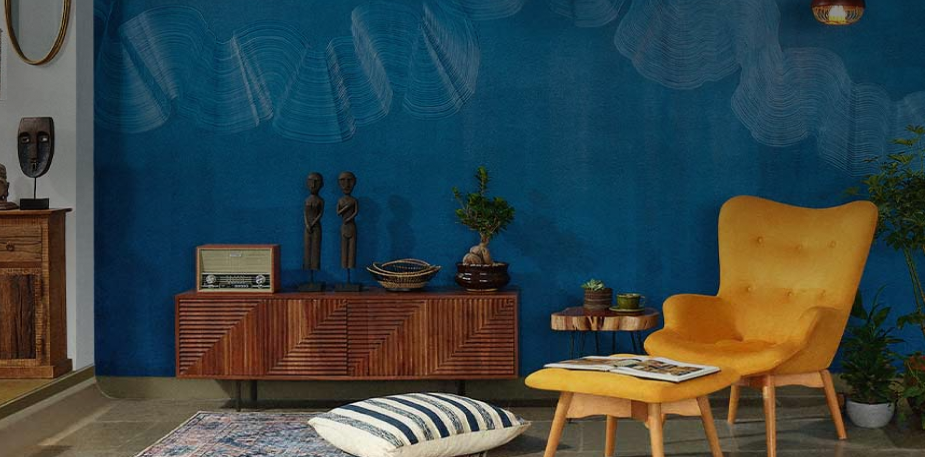Get your home interior design budget estimate
10 things you need to know about Le Corbusier’s design legacy

Le Corbusier’s influence on India can be reiterated with a simple observation. Over 50 years after its creation, even today, the first name that comes to mind of a planned Indian city is Chandigarh. Le Corbusier’s work in this city, on invitation from the then Indian Prime Minister Jawaharlal Nehru, left an enduring impression that continues to impact modern architecture in the country.
The Swiss-born French architect, who died 55 years ago, was a legend in the field, whose re-imagination of urban spaces still shapes our cities. Not surprisingly, Chandigarh, with its orderly grids and zones, even today stands separate from other Indian cities that are a chaotic collection of arbitrary constructions.
Ahead of Le Corbusier’s 133rd birthday on 6 October, Madhav Raman, principal and co-founder of New Delhi-based firm Anagram Architects, lists out 10 things learnt from the famous architect that are followed till date:
1. The idea of sectors in master plans of cities, evidence of which can be seen in Noida and Greater Noida among others, comes from Le Corbusier. Each sector becomes a self-contained unit, with shopping centres, schools, other infrastructure distributed among these sectors. Each would have a small mix of other land uses and an ability to operate in a self-contained way.
2. In the master plan, Le Corbusier had the notion that one could segregate land uses in different parts of cities, into residential, commercial and industrial, each independent of the other.
3. Corbusier’s baseline legacy kick-started how tall apartments and high rises work, including the lift core and multi-storey dwelling. His designs gave way to how people could live in a large complex—a staple of every major Indian city now. His ideas on the elevator, staircase, sewage, toilets and other plans continue to shape modern day skyscrapers.

Le Corbusier's re-imagination of urban spaces still shapes our cities. Image courtesy, David Evison /shutterstock.com
4. The ideas of anthropometric scales of proportions, ledge heights, doorframes being seven feet in height and other building standard measurements come from The Modulor, the human proportions study created by Le Corbusier in 1948.
5. A lot of Le Corbusier’s sense of architecture had to do with certain isolation from cities. The homes he designed were fortified personal spaces with an emphasis on sun, light and social isolation that is implied. There is a designated space to mingle with neighbours, which creates a situation that even today, in modern gated communities of Gurgaon, Whitefield and Lower Parel, people can go to clubhouse but don’t know too much about their neighbours.

Le Corbusier is well known for his tubular steel chairs - the LC-1, LC-2 and LC-3. Image courtesy, Cassina
6. He also brought concrete to India for large-scale constructions—he chiefly built with reinforced concrete and steel.
7. As an artist himself, Le Corbusier was in favour of public art, murals and the ability to create canvas for large-scale art. The work done by the St+Art Foundation, like the mural of a fisherwoman in Sassoon Dock and of Dadasaheb Phalke in Bandra off the sealink in Mumbai, are inspired by Le Corbusier’s ideas of large building facades.
8. One of his greatest legacies is that his approach relied on math, elemental geometric forms. According to parametric practice, programmes can generate multiple designs, a finite number of options, while he believed all things converge on one option.
9. The idea of using pilotis—supports such as pillars, columns, stilts—come from Le Corbusier. The modern day stilt parking, for example, owes its existence to this architect.
10. Le Corbusier, who began experimenting with furniture design in the early 1920s, is also well known for his tubular steel chairs - the LC-1, LC-2 and LC-3.
A lot of the modern mannerisms, way of dressing and jargon, like sun breaker, is derived from him. “Besides,” says Raman with a laugh, “the big round spectacles, which everyone wants to copy.”

Get Started with your interior design journey with us!
Speak to our design professionals
What’s the status of your home possession?
What’s the condition of your home/space?
Will you be living in your space during the renovation?
 Previous Question
Previous Question
Is your interior design budget over 4 lakhs?
 Previous Question
Previous Question
Book next available appointment slots with our experts!
Please Select Date and Day
 Previous Question
Previous Question

Something went wrong!
We were unable to receive your details. Please try submitting them again.

Appointment Scheduled!
Thank you for giving an opportunity to Asian Paints Beautiful Homes Service! Our Customer Experience Specialist will get in touch with you soon.
Appointment Date & time
Thank You!
Our team will contact you for further details.
What’s the status of your home possession?
What’s the condition of your home/space?
Will you be living in your space during the renovation ?
 Previous Question
Previous Question
Is your interior design budget over 4 lakhs?
 Previous Question
Previous Question
Book next available appointment slots with our experts!
DEC 2023
Please Select Date and Day
 Previous Question
Previous Question

Something went wrong!
We were unable to receive your details. Please try submitting them again.

Appointment Scheduled!
Thank you for giving an opportunity to Asian Paints Beautiful Homes Service! Our Customer Experience Specialist will get in touch with you soon.
Appointment Date & time
17 Oct 23, 03.00PM - 04.00PM





































